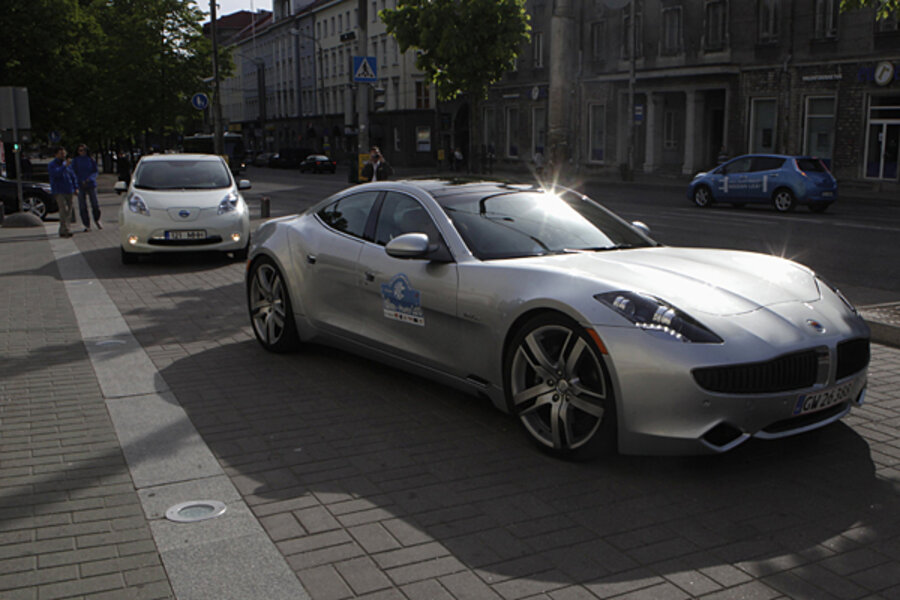Battery not at fault in Hurricane Sandy Fisker fire
Loading...
It's becoming an awkward, unfortunate routine.
Somewhere, somehow, a Fisker Karma catches fire, and the company rushes in its inspectors and engineers to analyze the incident.
A few days later, Fisker Automotive issues a statement explaining that the battery of the range-extended electric car isn't at fault, and that some other cause led to the fire.
In the latest case, Fisker analyzed the October 30 fire that destroyed 16 Karmas when Hurricane Sandy flood waters receded from New Jersey's Port Newark shipping docks.
In a statement last night, the company said it has concluded--after "a thorough investigation witnessed by NHTSA representatives"--that the cause was residual salt damage inside a Vehicle Control Unit submerged in seawater for several hours.
Corrosion from the salt caused a short circuit in the unit, which led to a fire when the Karma's 12-Volt battery fed power into the circuit.
Heavy winds then spread that fire to other Karmas parked nearby. But, the factory said, there were no explosions, as had been incorrectly reported.
The company ruled out the cars' 20-kilowatt-hour lithium-ion battery packs as a cause of, or even a contributing factor to, the blaze.
(That battery pack was the subject of a Fisker recallearlier this year, when now-bankrupt battery maker A123 Systems said its Michigan plant had produced defective cells.)
Fisker called the control unit "a standard component found in many types of vehicles," and noted that several other "non-hybrid cars from a variety of manufacturers" caught fire in separate incidents after the flood waters receded.
Thousands of vehicles from many different makers were destroyed by the flooding at the huge vehicle-handling facility, which left cars submerged in 5 to 8 feet of salty water for several hours.
In August, the factory concluded that a fire which badly damaged a 2012 Fisker Karma parked outside a store in Woodside, California, was caused by a short circuit in a cooling fan located in the engine compartment.
Fisker immediately initiated a recall to replace the fan.
Last May, the first Karma fire, in Sugar Land, Texas destroyed the car and damaged the garage and house it was kept in. Owner Jeremy Gutteriez and Fisker remain on adversarial terms.
Startup Fisker has not said lately how many cars it has produced, but the 18 cars damaged or destroyed in the three fires are likely to come from a total population of about 3,000 Karmas built to date.
The company's statement on the Port Newark fires ends, as its previous statements have done, by reiterating that the Fisker Karma "meets or exceeds all safety requirements for markets in North America, Europe, and the Middle East."







